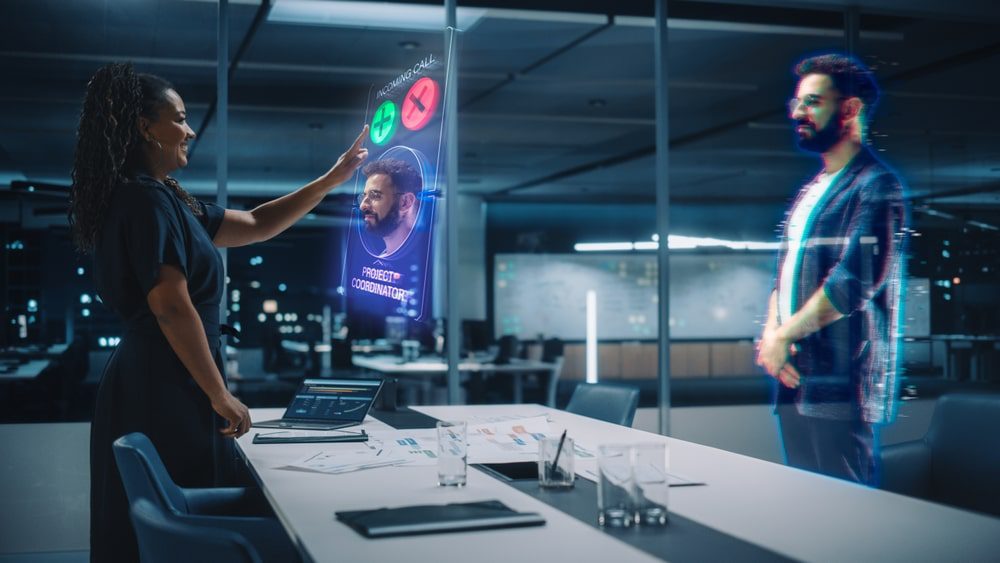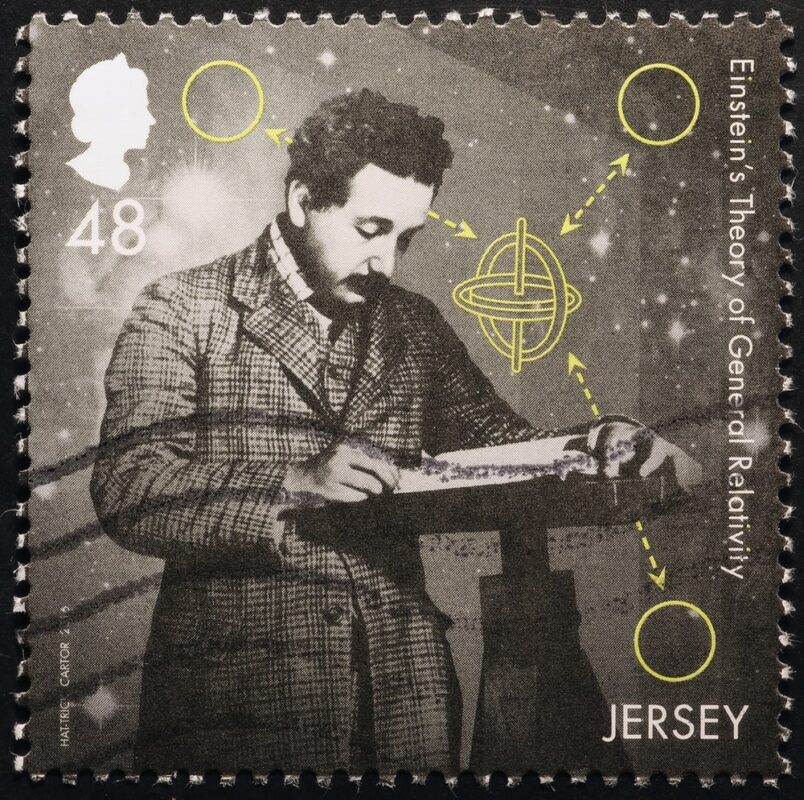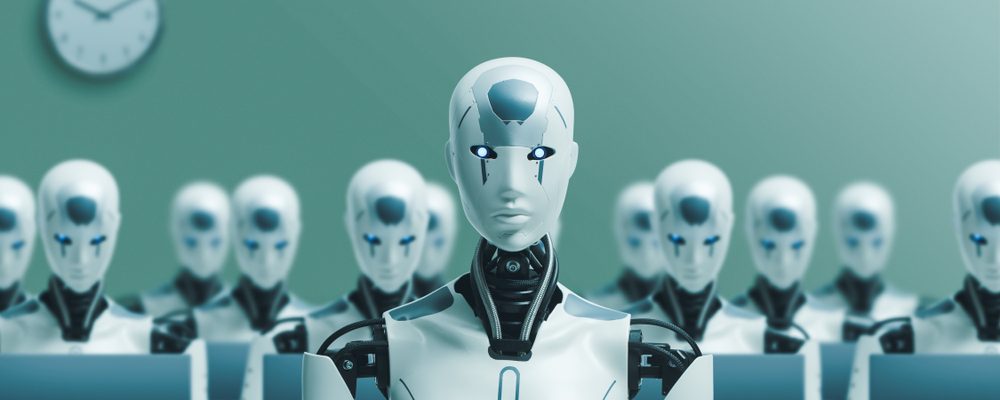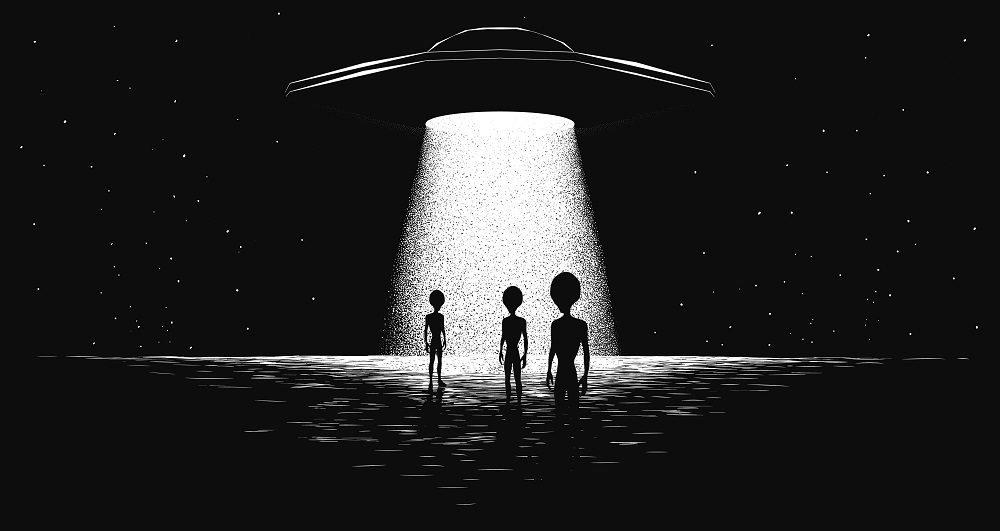Did You Know Science Fiction Already Predicted These 12 Things?
At times, the truth can be much stranger than fiction. If that’s the case, what about science fiction? Some of the most outlandish scenarios ever imagined by writers of books and TV shows have come true, and if you ask me, it doesn’t get spookier than this. Most of them were actually inspired by science fiction.
As a matter of fact, without writers to imagine them, all these digital technologies like video chatting, cell phones, drones, and robots might not be around now. Truth be told, what science fiction has managed to predict is quite astounding.
It predicted credit cards and television, but also the 1969 lunar landing. Bionic limbs, military tanks, antidepressants, and even submarines came from sci-fi. But that’s not everything! The concept of the internet originated in a book published over 30 years ago.
“Neuromancer” by William Gibson, who has been called the modern-day Nostradamus, also predicted reality TV and nanotechnology. Here are all the things that have been predicted by science fiction:
Imagining the future
The list of science fiction predictions is long enough to fill a book. Can you imagine? A book with sci-fi predictions from the book. That’s funny. But really now, how impressive is it to foresee all these digital technologies before computers even existed?
The whole connection of sci-fi to technology is far from just a coincidence, as it turns out. Researchers find inspiration in books, TV shows, and movies that imagine the future. According to a recent study, science fiction writers often consult with scientists, and their results have a great influence on tech research and offer new ideas in many different ways:
- new ways to modify or extend the capacities of the human body;
- human-computer interactions;
- human-robot interactions;
- artificial intelligence
Mobile phones
The TV show “Star Trek” predicted the flip phone back in 1966. Surprisingly or not, thirty years later, Motorola launched the first mobile flip phone, dubbed the StarTAC. Interestingly enough, the creators of “Star Trek” also gave crew members the tricorder, a hand-held device that stored data from all the planets Captain Kirk and his crew visited. If the creators had thought to combine the two, they might have prefigured the smartphone.

3D holograms
Inspired by the “Star Wars” scene where the robot R2D2 projects a holographic image of Princess Leia asking Obi-Wan Kenobi for help, scientists were eager to bring this technology to life. Nowadays, holography is offered in various applications. In fact, back in 2019, it brought rock-and-roll icons Buddy Holly and Roy Orbison “back to life” in concert, backed by live musicians.
3D food printing
The eponymous family in the animated TV show “The Jetsons” had an intricate home food machine that produced full meals. “Star Trek” had a replicator, which could easily print food from thin air in a matter of seconds.
Nowadays, Columbia University has 3D printing technology that can cook scratch-cooked meals from prepared ingredients rather than molecules. But fear not, as technology is currently working on that, too. As for desserts, the current race is focused on creating the ultimate chocolate printer.
Domestic robots
Czech author Karel Čapek came up with the term “robot” in 1920 in his well-known science fiction play “R.U.R. (Rossum’s Universal Robots). ” The word comes from “robotnik,” the Czech word for “forced worker.” In “Helen O’Loy,” Lester del Rey’s 1938 famous story, two men decide to invent Helen, a robot domestic servant, and fall in love with it.
There is also the short story “Nanny” by Philip K. Dick in 1955, which features a robot that takes care of children so well that the family it serves doesn’t want to upgrade to a newer model. However, the most popular robot servant in science fiction is the Jetsons’ Rosie, with its ever-present feather duster in its hand and funny punctuation in language.
Because of all these geniuses, we now have disc-shaped robotic floor cleaners, and the technology is yet to evolve and discover the multitasking artificially intelligent robots that would serve in our households. Some researchers believe that it might be a done deal in ten years.
Autonomous cars
Cars with “robot brains” were the central feature of the 2014 World’s Fair, but the science fiction writer Isaac Asimov predicted them in the New York Times back in 1964.
“Much effort will be put into the design of vehicles with ‘robot’ brains’—vehicles that can be set for particular destinations and that will then proceed there without interference by the slow reflexes of a human driver.”
Asimov wrote. But that’s not all! We also have autonomous cars envisioned in James Bond movies, too. They drive themselves with a modicum of human intervention. From the backseat of his BMW 750IL, agent 007 controls the car using his phone in 1997’s “Tomorrow Never Dies.”
As a matter of fact, Bond always has the coolest ride around, with plenty of features we are seeing nowadays and will probably see tomorrow, too. A wide number of automakers and some tech companies are developing fully autonomous vehicles with the intention of getting them on the road by 2025.

Flying cars
The fastest way to get from A to B is to travel in a line, just like the crow flies. However, given that the earth has hilly and watery terrain, a straight shot is oftentimes impossible, which slows us down. Well, no wonder that science fiction opened up new possibilities for us and reminded us that we could always…fly.
Flying cars made a rather early appearance in Bond creator Ian Fleming’s 1964 novel “Chitty-Chitty-Bang-Bang: The Magical Car.” Fleming seemed to have based his children’s tale on the real-life Chitty Bang Bang cars made by Count Louis Vorow Zborowski, a famous British race car driver and automobile engineer.
In reality, the real-life Chitties didn’t fly, but the ultimate car in the series, Chitty 4 (called “Babs”), managed to break the land-speed record in 1926 at 171 mph. The current record, set in 2018, is 448.757 mph.
But who knows how rapid flying cars will become in the future? In fact, “autonomous urban aircraft” is currently under development in the private sector, as well as by the military and NASA. These flying machines are meant to be able to carry a minimum of one person; therefore, we can’t call them drones.
Drones
Frank Herbert’s 1965 novel “Dune” predicted a tiny “hunter seeker” assassin drone. Also, autonomous flying vehicles were all over the place in Star Wars. As a matter of fact, a wide number of sci-fi books and movies depicted drones way before they were in actual use.
First, they were meant to be used by the military and, more recently, for commercial and recreational purposes. The U.S. Federal Aviation Administration issued its first commercial drone permit back in 2006, and it gave out 16 over the next eight years.
Then, interest in drones completely skyrocketed after Amazon CEO Jeff Bezos made an announcement in 2013 stating that the company was considering using drones to deliver packages. In 2018, the agency issued 100,000 remote pilot certificates, required to fly a drone.
Over time, the use of drones increased, now including aerial photography, emergency response, and agricultural precision crop monitoring. As predicted in Raymond Z. Gallun’s 1936 short story “The Scarab” and the TV series “Black Mirror,” robo-bees might someday help pollinate food crops. In fact, Wal-Mart filed a patent application in 2018 for small drones that could detect and spread pollen.
Virtual reality
When it comes to virtual reality, the credits go to Stanley G. Weinbaum’s 1935 story “Pygmalion’s Spectacles.” That’s when the concept of VR with goggles first came into the world.
Steven Lisberger’s 1892 film “Tron” also imagines getting into the digital world, and Neal Stephenson’s 1992 novel “Snow Crash” also describes VR in a specific way that sounds rather familiar nowadays:
“Through the use of electronic mirrors inside the computer, this beam is made to sweep back and forth across the lenses of Hiro’s goggles, in much the same way as the electron beam in a television paints the inner surface of the eponymous tube. The resulting image hands in space in front of Hiro’s view of reality… So Hiro’s not here at all. He’s in a computer-generated universe that’s drawing onto his goggles and pumping into his earphones.”
Nowadays, VR looks a lot like these writers envisioned it, offering an escape into alternative worlds utilizing goggles that offer immersive 3D images and sound. Haptic gloves also allow us to experience touch in an alternative universe, and researchers are currently working to bring flavors and aromas to the entire experience.
Smartwatches
If you’re a fan of the comic strip “Dick Tracy,” then you know that it can now be seen as a glimpse into the future. Its creator, Chester Gould, predicted it in 1946 when he gave his police detective a two-way wrist radio.
In 1964, Gould also added video, a feature that smartwatches still don’t sport to this day but definitely will. Maybe Gould’s inspiration for the video watch came from “The Jetsons,” where Elroy Jetson, in 1962, used his watch to see “The Flinstones,” another animated series made by the same company.
Video calls
With Zoom, FaceTime, WeChat, and many other video-chat apps for business meetings and personal video calls, we spend more than 340 million minutes talking to people even if we’re not in their presence. Looking back, this technology seemed impossible before.
But not in science fiction. In 1911, the Luxembourgish-American writer Hugo Gernsback wrote “Ralph 124C 41+: A Romance of the Year 2660,” where a video-conferencing device called the “telephoto” was featured. Then, the German film “Metropolis” was made in 1927, depicting a wall-mounted videophone. Of course, the concept of video calls was also depicted in “2001: A Space Odyssey.”
Earbuds
Ray Bradbury’s 1953 novel “Fahrenheit 451” foresees seashells and thimble radios tucked into people’s ears, but also Bluetooth-like headsets that produced “an electronic ocean of sound, of music and talk and music and talk, coming in on the shore of [your] unsleeping mind.”
Well, that’s the definition of wireless earbuds right there. Some even predict speech recognition, powered by machine learning (which is some sort of artificial intelligence), that will soon replace typing on keyboards or keypads altogether. Some even predict that the market for the technology might grow by 2024 to $21.5 billion.
Dreams coming true via memory and processing
For all these technologies to function, they need a lot of memory, storage, and superfast processing capacity. Virtual reality, for example, has to process wide amounts of data at the speed of thought without dropping frames, which might cause motion sickness.
Artificial intelligence, which drives almost every technology on our list, must “think” as fast as we do, or we won’t consider it intelligent at all—a capacity that 5G technology will soon be able to make.
If you’re eager to know more, we also recommend this article: 8 AI Robots So Scary They Should Be Turned Off















One Response
Thanks for your informative article. The world needs ideas. many times they come from lazy people. That is right and you heard me correctly. if you want an easy way to do a job ask a lazy person they will find a way to do it with the least amount of effort.
What we need is a way to document these methods so many people can see them and improve on them. The world advances upon need. As sad as the fact is WAR is one of the times when inventions are most prolific.
Man doesn’t advance when life is easy. Africa is a prime example. with living accomplished with little effort why change? only conditions that forced people to move provided better methods to survive. My point is that education is the basis for advancement. Sadly because of greed, we find that creativity is suppressed because of the ability to use what we have to alter our lives.
Making people dependent upon a government provides them with power. The fault with this system becomes evident as other cultures that value knowledge surpass and overtake and suppress entire cultures. Our own American Indian was nearly wiped out because their ability to adapt to another culture was necessary. While the culture in itself isn’t critical for survival, any knowledge lost is regrettable, requiring much more effort to recover than it took to create, to begin with.
Having the privilege of watching man advance from Milk delivery using horse-drawn wagons to watching a man walking on the moon is a leap that would fit within any SIFI book. We shall continue to advance. The direction is what we need to control With eight billion people ideas are plentiful. What I see is ideas restricted with a fixed and narrow path. Focused on control provided by artificial ways that don’t involve thought.
The focus is entirely on getting from point A to B The movement that provides only one goal. when I first learned to drive my choices included stopping to enjoy the sights. The very thing that began a fifty-three marriage and being patriarch of four generations. creating the adversity to become more productive and improve our chances of surviving, not just surviving but thriving. I know I am getting lengthy and off-target.
Back to my point. education. Mine while providing everything needed, didn’t provide the drive for success. Too many will not because they haven’t the capacity to create. They would if they had the information they could apply and have shown the way to put them together. In short to be lazy. My fateful stop that resulted in marrying that beautiful redhead provided me with the drive to provide the life we have today.
How do we provide people with the drive to succeed? Having a path that offers choices other than drugs and alcohol to forget the problems that are still there when you awaken. No path is perfect. The ability to see a path can make a difference. For many the path comes from a government that provides the money that is all too easily taken. This is the choice that must be taken because they have no other choices available, or ones they can see.
I won’t get into the government’s reason for assisting, but it is for power and control not to help. What we as citizens can do is attend the meetings that control the path they provide our children. We must not accept the answers of children that can’t learn so we must lower the standards. Life and the need to work for a living will not accept excuses for lower standards. The result is that the government has created a poor victim that must be cared for. The victim is an outcast because they don’t fit in.
As human nature does it labels these people that was discrimination, and undesirable. government always seeking to expand power now passes laws to protect against discrimination now called HATE crimes. As we have corrected these problems and people become more educated, they are losing the victim once thought of as a permanent fixture in America’s culture. Their answer is to import more problems. All because of education. If we look closely, we find areas that don’t have the involvement of parents to control education quality. Many times, the reason is that parents themselves don’t have the education to recognize that they are controlled by the government.
These areas are largely poor and predominantly black. Creating the very problems that have been solved in other areas with better education and job opportunities. people despite of skin color who have abilities that qualify them for better jobs. government forcing employment because of skin color or gender never works. even when the person has the ability, they are seen as substandard because they got their job because of government action. Making things worse are people who demand employment even as they are unqualified because of the now criminal act of racism. How to solve this.
Start with the basics and stick with them. demanding performance from the student. our young will do what is demanded of them. Yes, we do have some that require more help. Don’t lower the standards for an entire class so that one student can pass only to fail as they must perform within society.
These school boards that think they help only create the problems the students must deal with making them feel like failures because they don’t have basic skills like math. it is time that citizens take back control of our nation. the government gets its power from us. it is time we use it again and make America prosper.
Riches don’t come from just money but the creativity that comes from our children. We already have diversity. Let’s use it. If a dirt poor boy from Detroit can become a millionaire with only his own efforts anyone can. what I had was finding my education the Navy provided. Never say I cant, because you can. if one path dont work try another. YOU CAN! ——- I, Grampa